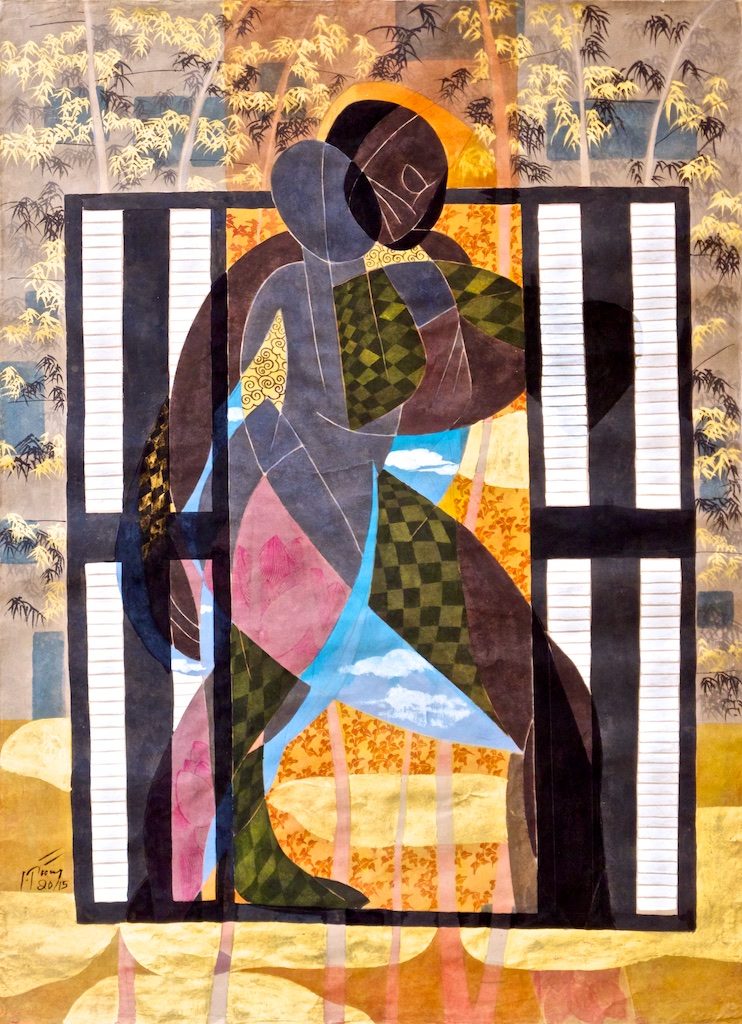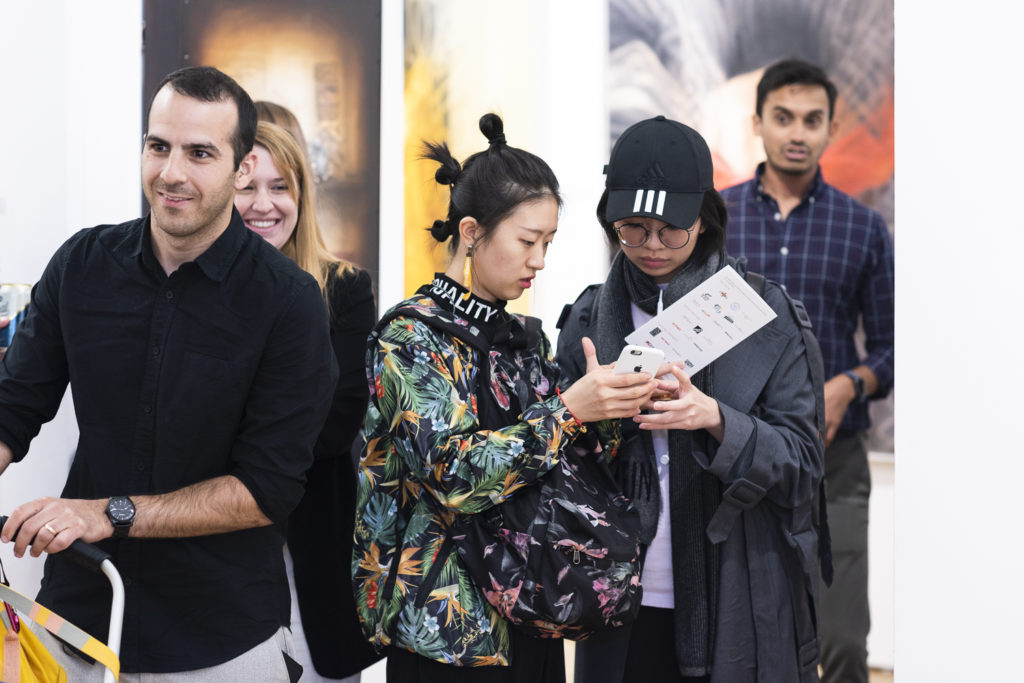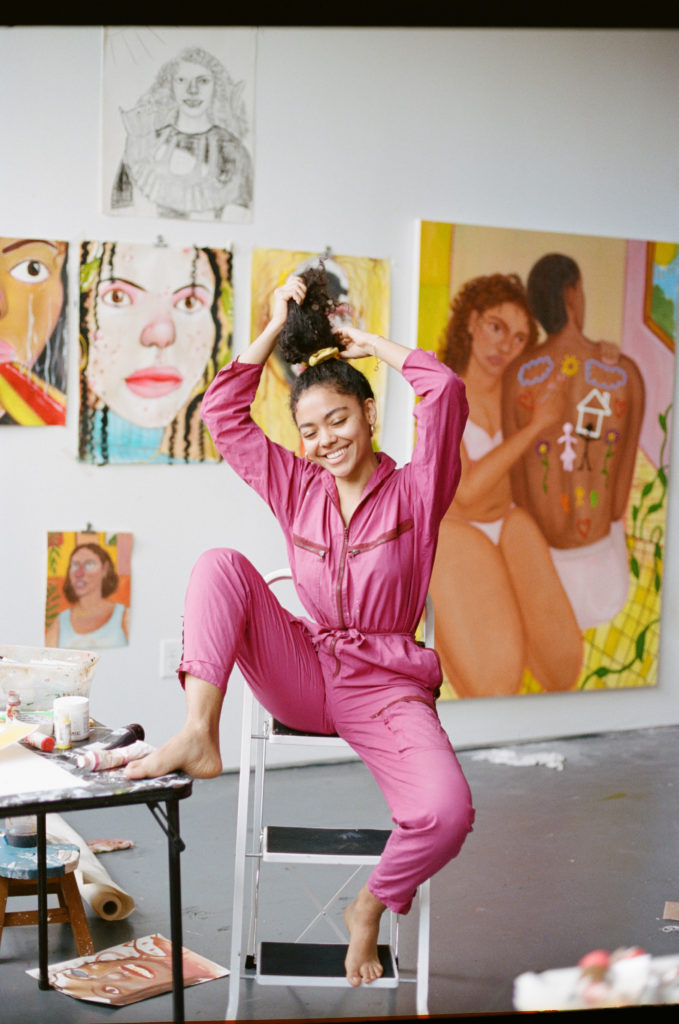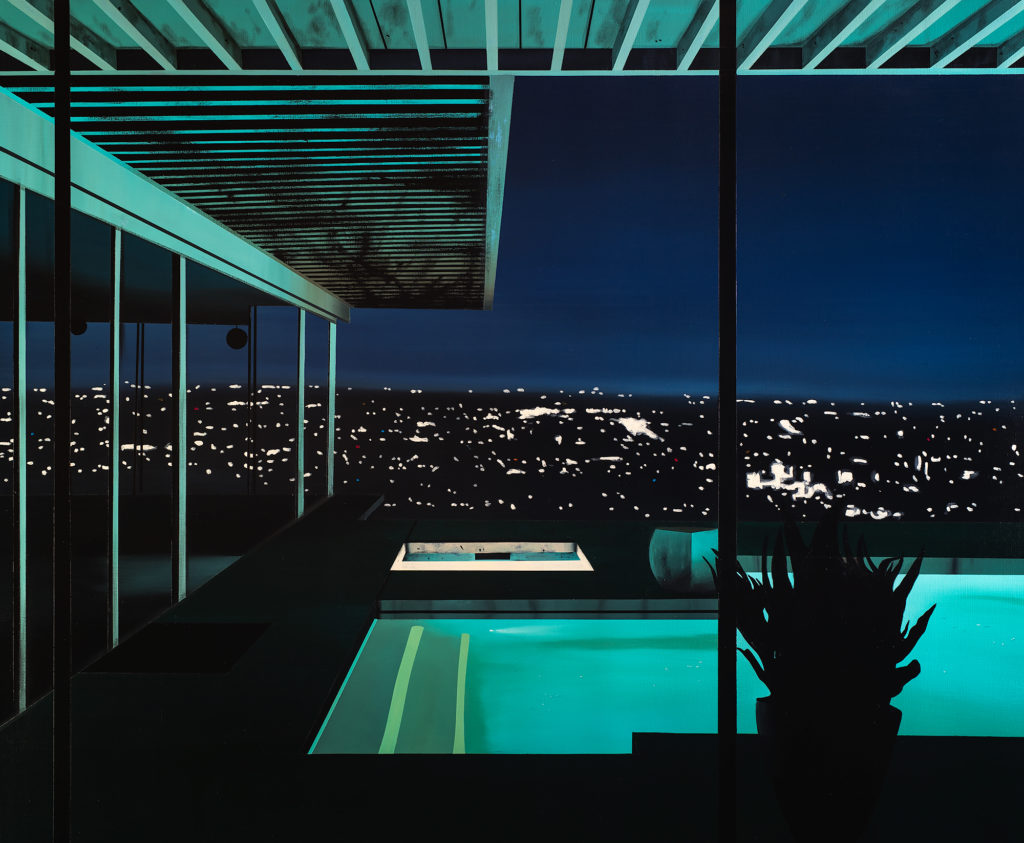As the Affordable Art Fair Marks Its 20th Anniversary, Young Buyers Find Its Transparency and Accessibility More Relevant Than Ever


Artnet Gallery Network

The Affordable Art Fair isn’t the most expensive fair in the industry, but it might be the most expansive. Held in 10 cities around the world, the fair, which will celebrate its 20th anniversary this fall, welcomes nearly 200,000 visitors each year.
Yet, even more impressive than the number of people it reaches is who it reaches: millennial collectors—a demographic coveted by all of today’s fair organizers. With its friendly pricing model, commitment to transparency, and approachable vibe, the Affordable Art Fair has turned hordes of everyday art lovers into burgeoning collectors—many of whom come back season after season, year after year.

Dinh Thi Tham Poong, Within Myself (2015). On view at the booth of Vietnamese Contemporary Fine Art. Price: $6,800. Courtesy of Vietnamese Contemporary Fine Art.
For New Yorkers, that season is here again. The Spring edition of the Affordable Art Fair returns to the Metropolitan Pavilion later this month, marking the 27th time the event has been held in the city since it first arrived in 2001.
The festivities will kick off the night of March 27 with the fair’s signature Private View event for VIPs and patrons. The next night, from 6 p.m. to 9 p.m., the fair will host Art After Dark with a performance by Philadelphia-based artist and musician Vessna Scheff. Sixty-nine galleries showing the work of more than 400 artists are slated to be on view over the weekend, with all works priced at or under $10,000.
So why, in the words of Vanessa Seis, director of the New York edition, is the fair a “gateway drug” for young enthusiasts?

A shot of the crowd at the Affordable Art Fair, 2018. Courtesy of the Affordable Art Fair.
“We have a strong millennial following on social media and we are very engaged with a fun and friendly tone on those channels. We are fortunate that our exhibitors always aim to bring fresh works to the fair, so with each edition we have new and interesting content to work with. That’s important to young collectors—that sense of new and discovery,” Seis says.
So, too, is price transparency, the director explains. It goes back to the inaugral fair’s stated goal of “democratizing the art world and dispelling the misconception that you have to be a squillionaire to buy art.”
“The price for each artwork must clearly be stated next to it,” says Seis. “This allows our visitors, even the shyest ones, to instantly understand what’s possible within their budget. It empowers them to make a confident decision when buying a piece of art that they love.”
“What I like about the Affordable Art Fair is that people come to the fair to buy,” says Maita Sayo, the director of Reference: Contemporary gallery in Toronto, who has participated in the fair since 2015. “The demographic is consistent, and I see many of the same faces every year. It’s an interesting looking niche in the art fair landscape, and a moneymaker for a lot of galleries.”
Sayo participates in a number of fairs throughout the year, but for her the Affordable has been the most consistent of the bunch.

Suzanne Olivier, Avoir Une Place en Ce Monde (2012). Price: $8,000. Courtesy of Beaux-arts des Ameriques.
“The art fair landscape in New York is huge and very difficult to navigate. And the price points of other fairs are getting quite high. The The Affordable Art Fair remains to be a fairly reasonable one to participate in. The organizers make it very easy to return, and they consistently bring in younger galleries that keep it interesting.”
Helping young galleries navigate the art fair scene has also been part of the fair’s mission since day one, Seis notes. “We provide galleries with tips on sales tactics, stand presentation, and insights into our visitor demographics in the lead-up to the fair. The more an exhibitor knows about the local market before they get onsite, the more likely they will be successful. We also provide them with a basic five-week marketing plan to make sure they’re activating their collectors at the right time and start promoting their participation via their own channels at the right time.”
“In the end,” Seis says, “the success of a fair is the joint effort between the organizer and the exhibitor.”

New York-based artist Mónica Hernández, who will be the subject of the Affordable Art Fair Young Talent Exhibition. Courtesy of the artist. Photo: Ali Mitton.
For this and other reasons, the fair boasts a high rate of returning galleries. “The openness and creativity of the fair and outstanding staff are what keep me coming back,” says Judy Day, a dealer of contemporary Vietnamese Art who has participated in Affordable Fairs since 2006. “The The Affordable Art Fair has workshops for children, it has lectures and discussions about collecting for first-time and long-time collectors, it has walking tours to different booths with gallerists giving some tips about what the visitors might look for in the work displayed in the booth.”

Laurence Jones, Night Pool II (2018). Courtesy of the artist and the Affordable Art Fair.
“It’s always a great experience doing this fair; the team is the best in this industry,” says Emmanuel Fremin, who has participated in more than a dozen Affordable Art Fairs in both New York and Hong Kong. “The first time we participated at the fair in New York we couldn’t believe how many people attended the fair. Sales were great, too—20 to 30 works sold in four days. We were very impressed.”
The Spring edition of the New York Affordable Art Fair will take place from March 27-31, 2019, at the Metropolitan Pavilion. Tickets are available here.